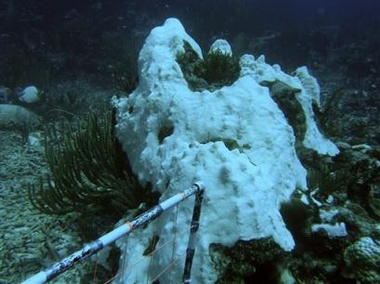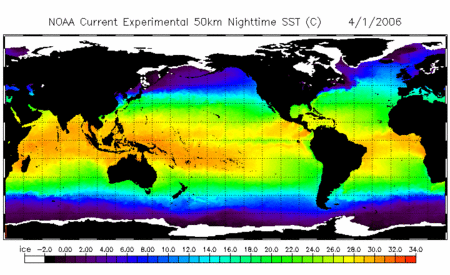One more thing to worry about. Seems that the coral die off in the Caribbean is worse than the 20 previous years put together.

From here
A one-two punch of bleaching from record hot water followed by disease has killed ancient and delicate coral in the biggest loss of reefs scientists have ever seen in Caribbean waters.
Researchers from around the globe are scrambling to figure out the extent of the loss. Early conservative estimates from Puerto Rico and the U.S. Virgin Islands find that about one-third of the coral in official monitoring sites has recently died.
“It’s an unprecedented die-off,” said National Park Service fisheries biologist Jeff Miller, who last week checked 40 stations in the Virgin Islands. “The mortality that we’re seeing now is of the extremely slow-growing reef-building corals. These are corals that are the foundation of the reef … We’re talking colonies that were here when Columbus came by have died in the past three to four months.”
Some of the devastated coral can never be replaced because it only grows the width of one dime a year, Miller said.
Coral reefs are the basis for a multibillion-dollar tourism and commercial fishing economy in the Caribbean. Key fish species use coral as habitat and feeding grounds. Reefs limit the damage from hurricanes and tsunamis. More recently they are being touted as possible sources for new medicines.
If coral reefs die “you lose the goose with golden eggs” that are key parts of small island economies, said Edwin Hernandez-Delgado, a University of Puerto Rico biology researcher.
On Sunday, Hernandez-Delgado found a colony of 800-year-old star coral — more than 13 feet high — that had just died in the waters off Puerto Rico.
“We did lose entire colonies,” he said. “This is something we have never seen before.”
On Wednesday, Tyler Smith, coordinator of the U.S. Virgin Islands Coral Reef Monitoring program, dived at a popular spot for tourists in St. Thomas and saw an old chunk of brain coral, about 3 feet in diameter, that was at least 90 percent dead from the disease called “white plague.”
“We haven’t seen an event of this magnitude in the Caribbean before,” said Mark Eakin, coordinator of the National Oceanic and Atmospheric Administration’s Coral Reef Watch.
The Caribbean is actually better off than areas of the Indian and Pacific ocean where mortality rates — mostly from warming waters — have been in the 90 percent range in past years, said Tom Goreau of the Global Coral Reef Alliance. Goreau called what’s happening worldwide “an underwater holocaust.”
And with global warming, scientists are pessimistic about the future of coral reefs.
“The prognosis is not good,” said biochemistry professor M. James Crabbe of the University of Luton near London. In early April, he will investigate coral reef mortality in Jamaica. “If you want to see a coral reef, go now, because they just won’t survive in their current state.”
For the Caribbean, it all started with hot sea temperatures, first in Panama in the spring and early summer, and it got worse from there.
New NOAA sea surface temperature figures show the sustained heating in the Caribbean last summer and fall was by far the worst in 21 years of satellite monitoring, Eakin said.
“The 2005 event is bigger than all the previous 20 years combined,” he said.
What happened in the Caribbean would be the equivalent of every city in the United States recording a record high temperature at the same time, Eakin said. And it remained hot for weeks, even months, stressing the coral.
The heat causes the symbiotic algae that provides food for the coral to die and turn white. That puts the coral in critical condition. If coral remains bleached for more than a week, the chance of death soars, according to NOAA scientists.
In the past, only some coral species would bleach during hot water spells and the problem would occur only at certain depths. But in 2005, bleaching struck far more of the region at all depths and in most species.
A February NOAA report calculates 96 percent of lettuce coral, 93 percent of the star coral and nearly 61 percent of the iconic brain coral in St. Croix had bleached. Much of the coral had started to recover from the bleaching last fall, but then the weakened colonies were struck by disease, finishing them off.
Eakin, who oversees the temperature study of the warmer water, said it’s hard to point to global warming for just one season’s high temperatures, but other scientists are convinced.
“This is probably a harbinger of things to come,” said John Rollino, the chief scientist for the Bahamian Reef Survey. “The coral bleaching is probably more a symptom of disease — the widespread global environmental degradation — that’s going on.”
Crabbe said evidence of global warming is overwhelming.
“The big problem for coral is the question of whether they can adapt sufficiently quickly to cope with climate change,” Crabbe said. “I think the evidence we have at the moment is: No, they can’t.
“It’ll not be the same ecosystem,” he said. “The fish will go away. The smaller predators will go away. The invertebrates will go away.”
more bad news here.
check out the graphs on the left.

A major coral bleaching event occurred in the Caribbean in mid- to late-2005, and may result in significant coral death in much of the region. Anomalously warm water centered around the northern Antilles near the Virgin Islands and Puerto Rico expanded southward (see Figure 1, below). Thermal stress reached Degree Heating Week (DHW) values of over 15 at some locations. Comparison with the previous 20 years of satellite data confirm that thermal stress from this event was greater than the previous 20 years combined.
and more here.
The Pacific is getting warmer and more acidic, while the amount of oxygen and the building blocks for coral and some kinds of plankton are decreasing, according to initial results from scientists with National Oceanic and Atmospheric Administration’s Pacific Marine Environmental Laboratory, the University of Washington and elsewhere.
“There are big changes,” said Christopher Sabine, chief scientist for one leg of the research trip, which ultimately traveled from Antarctica to Alaska.
Many of the most interesting results are tied to the ocean becoming increasingly acidic because of its absorption of carbon dioxide.
“You don’t have to believe in climate change to believe that this is happening,” said Joanie Kleypas, an oceanographer with the University Corporation for Atmospheric Research, a non-profit organization based in Boulder, Colo. “It’s pretty much simple thermodynamics.”
And it’s alarming.
“Acidification is more frightening than a lot of the climate change issues,” Kleypas said. That’s in part because the process is hard to alter.
“It’s a slow-moving ship, and we’re all trying to row with toothpicks,” she said.